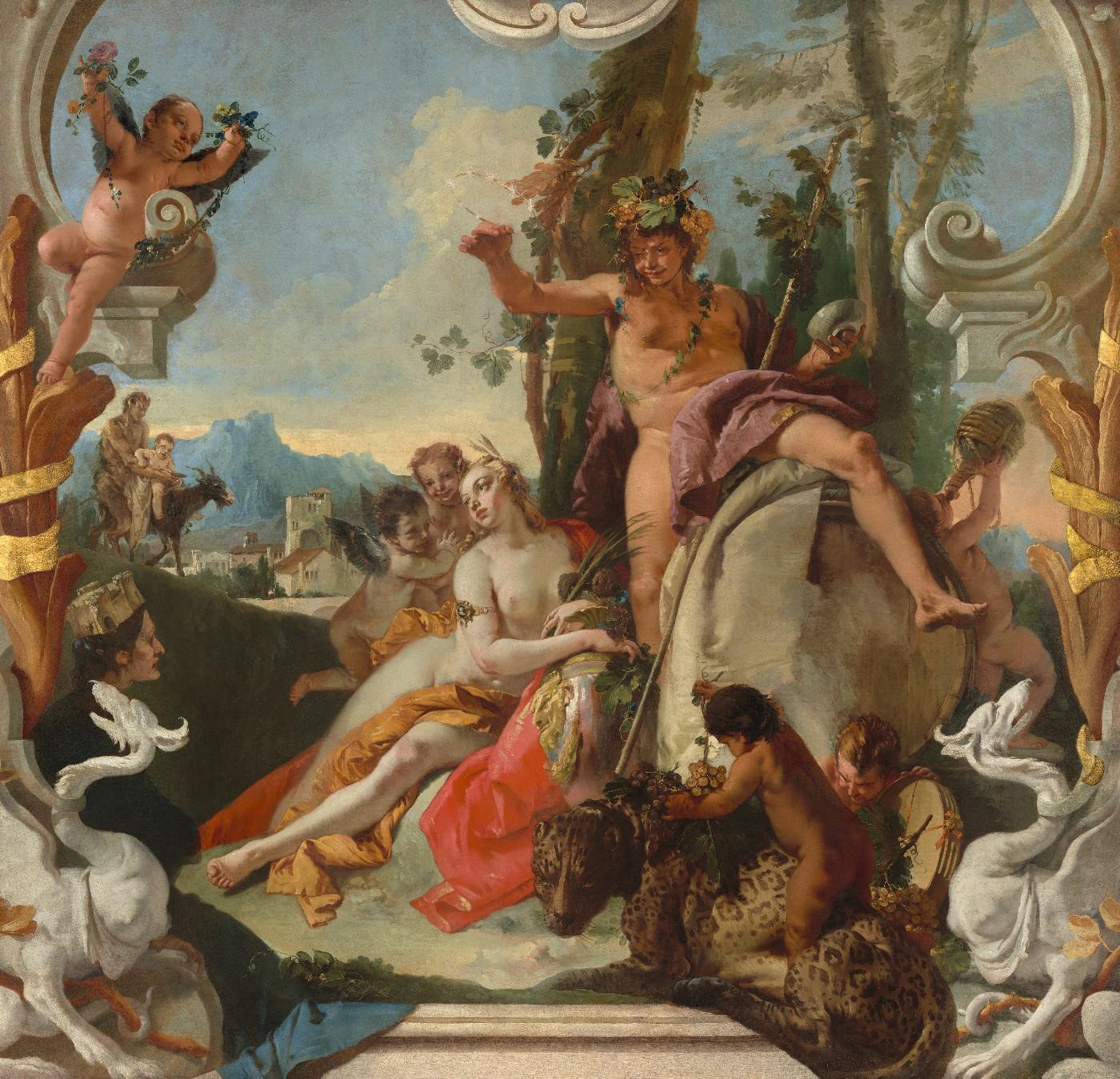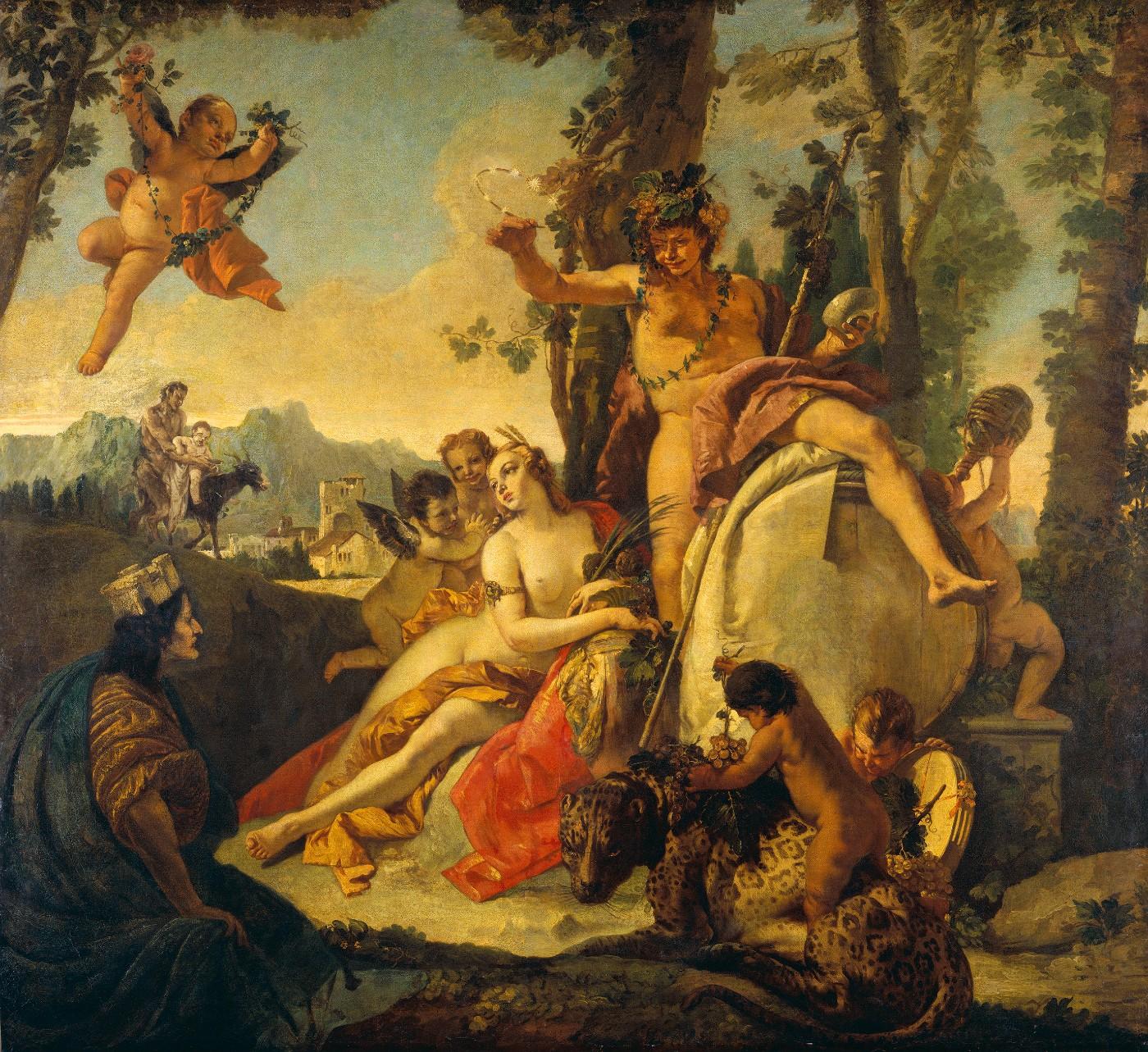Bacchus and Ariadne
Tiepolo's painting magnificently depicts the moment before Bacchus, the god of wine, crowns Ariadne after falling in love with her. According to the myth, Bacchus discovered Ariadne on the shore of the island of Naxos where she was left behind by her lover, Theseus. Following this scene, Ariadne ascended to Mount Olympus, gaining immortality. Tiepolo's rendering of the myth shows Bacchus sitting unsteadily atop a barrel with the glittering crown in hand. Bacchus is surrounded by revelers holding jugs of wine and grapevines, representing the fecundity of earth, while one of the jaguars that led his chariot rests beneath him. The wheat Ariadne wears in her hair and reeds held in her hand further symbolize the earth.
Following its removal from its original setting, Bacchus and Ariadne remained in private collections in Italy and Vienna before being sold in the late 1920s to William Robert Timken and Lillian Guyer Timken. The painting came to the Gallery in 1960 as part of the Timken Collection. Oliver Tostmann, now curator of european paintings at Wadsworth Atheneum, Hartford, contributed significantly to the understanding of "Baccchus and Ariadne" and its counterparts when he was a Joseph McCrindle Fellow and then Andrew W. Mellon Fellow at the National Gallery from 2007 to 2011.
Conservation and Science at the National Gallery of Art
The conservation division of the National Gallery of Art is responsible for the preservation and study of works of art in the Gallery's collection. The division comprises departments that specialize in the treatment and care of paintings, works on paper, objects, photographs, textiles, and frames. Departments that support the mission of the entire division are preventive conservation, scientific research, analytical imaging, and administration.






























